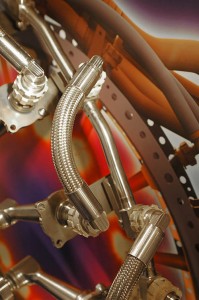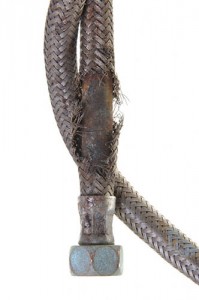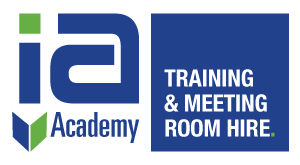 Hose lifecycle begins with the purchase and storage of the hose, to its installation, operation and culminates with hose replacement.
Hose lifecycle begins with the purchase and storage of the hose, to its installation, operation and culminates with hose replacement.
Purchase
Ensure you purchase the right hose and fittings for the job. Especially, take into account hose application, material, hose size, pressure and temperature. It is always advisable to select a hose with a higher psi rate than you really need.
Storage
The ideal storage conditions for hose is indoors in a dark, dry atmosphere away from any heat or electrical sources. Keep the temperature between +10° C to +20° C. Remember, any hydraulic hose system kept for a length of time needs inspecting for cracks, leakage and the couplings inspected then tested before use.
Shelf Life
Always check the manufacturer’s handbook for the shelf life of your hose as it will vary depending on the hose type, materials and manufacturer. There are a number of variables that influence the shelf life of the hose, including: temperature, humidity, ozone, oil, solvents, pests (insects or rodents) storage space and bends.
Installation
Make sure you have the correct length of hose. It must be neither too taut or too slack.
The hose must be longer than the distance of port to port. This is because it may expand by up to 50% of its length, especially when pressurised. Hose that is too slack can cause problems with abrasion and snagging.
If the hose needs to bend, then you must check how far it can bend before it kinks. Moreover, if the hose kinks then this will restrict the flow and could lead to leaks in the hose or more likely at the fitting joint. Therefore, always confirm you have the correct fitting for the hose and ensure there is no bending near the fitting. If this is necessary, then use an elbow fitting instead.
Operation
Don’t use a hose for any application other than those recommended by the manufacturer. Working a hose to its capacity for a lengthy period, or using it in extreme conditions, shortens hose life.
When considering hose lifecycle, it is necessary to implement a programme of regular inspection and maintenance to ensure that hoses and couplings are safe. Check the manufacturer’s guide and the relevant legal requirements.
Look out for:
- Oil leaks
- Twisted or kinked hoses
- Worn hose outer covers
- Worn or eroded fittings
Logging your Hose Lifecycle
As a pointer to see how long your hose should last, make a record of when you replace a hose to get an idea of how long they should last.
Hydraulic hoses can be very dangerous and cause terrible injuries if they leak or split. Bearing this in mind, inspections must include visual inspection of the hose and hose fittings as well as all other components in the system. Finally, run functionality tests.

For more information on the issues involved in safety for hydraulic hoses, see the article on Hydraulic Hose Safety Issues.
Replacement
Check manufacturer’s notes on when a hose needs replacing by taking into account:
- Pressure surges—these shorten hose life
- Routing—over complicated routing can be a problem
- Environment—systems exposed to the elements will not last as long as those inside
- Operating and ambient temperatures—high or low temperatures affect hose life
- Fittings—fitting configuration and selection also need consideration
- Mobile or stationary—mobile equipment will wear more quickly
- Abrasion—rough abrasion areas are a potential problem
Never replace a hose with an old hose. Additionally, never use hose near or over 10 years from the date of purchase or hose that is past the manufacturer’s use by date.
In summary, resolving to keep all these issues in mind, regarding hose lifecycle, will certainly help minimise safety issues and reduce operating costs.
BFPA Training at the IA Academy
Industrial Ancillaries Academy runs a number of courses in partnership with the BFPA, designed for anyone who works with hydraulics.
Foundation Safety Course
Basic hydraulics health and safety course.
Hose Assembly Skills Course
2-day course on hose assembly procedure, including routing and installation.
Hose Integrity, Inspection and Management Course
Health and safety assessment training including risk analysis and competence.
Small Bore Tubing Integrity Course
Safety training in the manufacture of small bore tubing assemblies.
Call us on 01246 242050 or get in touch via our Contact page to find out more details about our courses and course dates.
Other related articles
Hydraulic Hose Safety Issues
Find out how important safety is for the hydraulic hose industry. Also, learn how and why the majority of accidents happen and how to prevent them.
What is the difference between pipes and tubes?
Do you know what the difference is and does it matter? The answer is “yes”, especially if you work in engineering or construction. Find out why it matters and when you would use tube or pipe by reading this article.
What is the difference between NPT and BSP fittings?
There are a number of different sizing standards used throughout the world. Do you know which one you should use and what the difference is between them? No? Then read this article and find out.
What is the difference between hydraulics and pneumatics?
They both convert fluid pressure to mechanical motion. The major difference is that one works with air and the other with liquids. Find out which is which and more with this article.
The principles of pipe and tube bending
What happens to metal when you bend it? If you want to find out, then read this article about tube bending processes.
Unsure about what standards are relevant? Then check out this article on standards used in the hydraulic and pneumatic industries.
A guide to identifying fittings and connections. Essential for the correct connection of systems.
